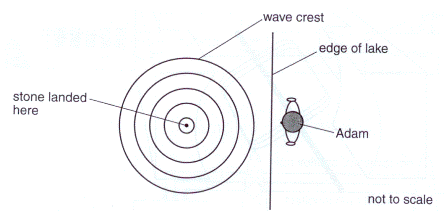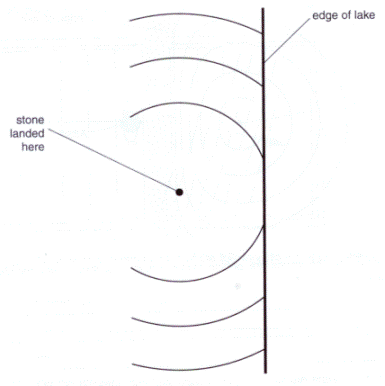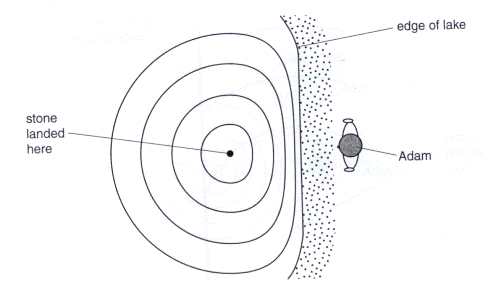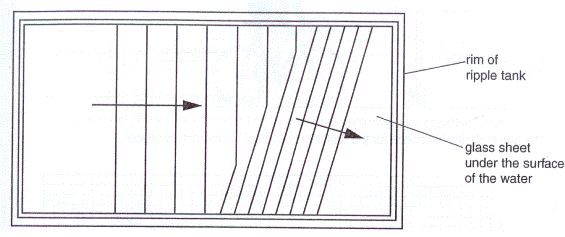4. This question is about transverse waves. Adam throws a stone into a lake. He watches the waves move towards the edge.
The distance between each wave is 10 cm. Adam counts two complete waves reaching the edge in each second. (a) Calculate the speed of the wave. You must show how you work out your answer, including and equation used. wave speed = .......... unit = .......... [4] (b) The waves travelling towards the edge of the lake are reflected. Finish the diagram to show how these three waves are reflected from the edge.
[3] (c) Adam goes to another part of the lake where there is a beach. He throws in a stone. This is what he sees.
(i) Suggest why the wave are getting closer together as they move towards the beach. (ii) Adam notices that the waves get more difficult to see as they spread out across the water. What happens to the amplitude of the waves as they spread out? [1] Explain why. [1] (d) Adam uses a ripple tank to try to reproduce the effect he saw in the lake. He places a sheet of glass under the water on the right hand side of the tank.
(i) State what happens to each of the following as the ripples change direction in the tank. wavelength [1] speed [1] frequency [1] (ii) On the diagram, carefully draw a line to show the edge of the glass sheet that causes the ripples to change direction. [1] [Total: 15] Hints and Answers coming soon!
|




